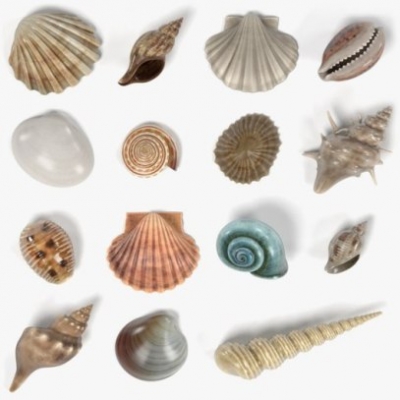
SHELLS
The bodies of some creatures are protected by strong shells. They include all kinds of animals ranging from crabs to armadillos, but the most well known are marine molluscs such as winkles, cockles, and clams. These animals absorb chalky minerals from their food or sea water and turn them into beautiful, sculptured, often vividly coloured “seashells”. These are sometimes lined with iridescent, gleaming mother-of-pearl.
- NAUTILUS A relative of the octopuses, with big eyes and up to 90 tentacles, the nautilus can retreat into its pearl-lined shell for safety. The inner chambers of the shell act as flotation tanks.
- VENUS COMB MUREX Named for its comb-like appearance, this sea snail of the tropical Indian and Pacific oceans has up to 100 sharp spines that protect it from predators such as shellfish-eating rays.
- PAPAL MITRE This is one of about 800 known species of mitre shells, which all have a pointed form similar to the ceremonial hats worn by bishops and popes. The papal mitre may be up to 15 cm (6 in) long.
- CUBAN LAND SNAIL Some land snails are brightly coloured too, but their colours are usually similar to those of the places where they live. Snails that have noticeably different colours are soon eaten by birds.
- OYSTER SHELL Most oysters have shells that are rough outside, but pearly inside. Grains of sand that find their way into oyster shells are smothered with layers of shell material, turning them into pearls.
- SEA URCHIN TEST Sea urchins belong to a group of animals called echinoderms. Their “shells” are covered with skin, so they are not true shells like those of molluscs. Known as tests, they are peppered with holes and small knobs where the spines were once attached.
- SPINY SAND COCKLE Cockles and clams are molluscs with two shells, called bivalves. A cockle burrows into sand, often on coasts that dry out at low tide, but it can close its shells tightly to keep itself moist until the tide turns.
- MANUS ISLAND SNAIL All snails have a shell that is coiled in a spiral, so the coil gets smaller towards the tip. As the snail grows, it adds shell material at the shell mouth, which gets broader all the time.
Picture Credit : Google



